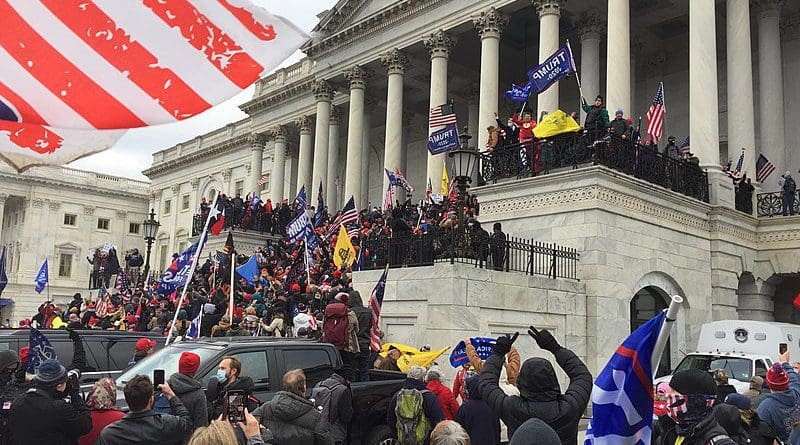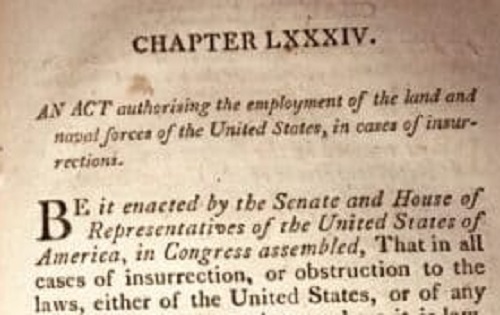June 2025 – Los Angeles, California — Recent discussions around the possible use of the Insurrection Act of 1807 have prompted renewed public interest in how this law functions within the framework of the U.S. Constitution. As demonstrations and public gatherings continue in various U.S. cities, the legal tools available to federal and state governments are once again under examination. This article outlines the legal background of the Insurrection Act, historical instances of its use, and the key legal and constitutional principles involved. All information is drawn from official government publications and expert legal commentary.

What Is the Insurrection Act of 1807?
The Insurrection Act is a federal law that authorizes the President of the United States to deploy military forces domestically under specific and limited conditions. The law, codified under 10 U.S. Code §§ 251–255, is designed for use during severe disturbances where local authorities are unable to maintain public order or enforce federal laws.
According to the Congressional Research Service, the Act may be invoked in the following situations:
-
When a state requests federal assistance to suppress an insurrection or civil disturbance;
-
When unlawful activities obstruct the execution of federal law and the enforcement cannot be achieved through normal means;
-
When citizens are deprived of constitutionally protected rights, and the state fails or refuses to protect those rights.
Historical Uses of the Insurrection Act
Since its passage in the early 19th century, the Insurrection Act has been used sparingly and only in exceptional circumstances. Below are some documented historical examples:
-
1871: President Ulysses S. Grant invoked the Act to counter violence by the Ku Klux Klan in South Carolina during Reconstruction.
-
1957: President Dwight D. Eisenhower used the law to enforce desegregation in Little Rock, Arkansas, after the state’s governor resisted federal court orders.
-
1965 and 1967: President Lyndon B. Johnson relied on the Act during periods of civil unrest in cities such as Detroit and Chicago.
-
1992: President George H. W. Bush, at the request of California officials, used the Act to respond to the riots in Los Angeles following the Rodney King verdict.
In each case, federal action was coordinated with local or state authorities, and specific legal justifications were provided.
Current Legal Framework and Constitutional Boundaries
Legal scholars emphasize that invoking the Insurrection Act requires careful legal scrutiny. The law is intended for emergency use and must comply with both statutory and constitutional protections, including the Posse Comitatus Act, which limits the use of the U.S. military in domestic law enforcement roles.
The U.S. Constitution grants states primary responsibility for maintaining public order. Therefore, any use of federal troops without a formal request from a state governor may face legal challenges. According to the Brennan Center for Justice, any federal deployment not clearly authorized under the Insurrection Act could be subject to judicial review and may raise concerns about federalism and the separation of powers.

Context in Los Angeles and Other Cities
As of June 2025, various U.S. cities, including Los Angeles, have seen public protests related to multiple issues, including immigration policy and law enforcement. According to official updates from the California Governor’s Office, local authorities are managing crowd control and public safety in coordination with state-level law enforcement.
The California National Guard has confirmed the mobilization of personnel to support local agencies. As of the most recent reports, approximately 4,000 Guard members are active in the Los Angeles region, assisting in logistical and safety operations. The Department of Homeland Security (DHS) has also confirmed the presence of federal agents in support roles.
There is no confirmed official declaration invoking the Insurrection Act as of the time of this publication. Discussions around potential invocation have been noted in political commentary, but no executive order or formal legal action under the Act has been publicly issued.

Response from State Officials
Governor Gavin Newsom of California has issued public statements affirming the state’s responsibility for managing local law enforcement efforts. In his recent address, the governor emphasized the importance of state autonomy in addressing public safety and encouraged constructive dialogue among communities and public officials.
State authorities have not made a formal request for federal intervention under the Insurrection Act. California officials have reiterated their preference for de-escalation, coordination, and respect for constitutional protections.

Reactions from Civil and Legal Organizations
National organizations such as the American Civil Liberties Union (ACLU) and Human Rights Watch have commented on the importance of upholding civil liberties during times of unrest. These groups advocate for peaceful conflict resolution, transparency in government action, and adherence to constitutional rights, including freedom of assembly and free speech.
Public health and community safety experts have also highlighted the need for coordinated humanitarian responses during times of social unrest. Organizations like the American Red Cross continue to provide emergency services and support to affected communities.

What Happens Next?
If the Insurrection Act were to be invoked, federal authorities would be required to document their legal justification and follow specific statutory procedures. This includes issuing a formal proclamation under 10 U.S. Code § 254, calling on individuals involved in unlawful activity to disperse.
Any decision to deploy military forces domestically would likely face review from federal courts, especially if contested by state officials. The Congressional Research Service notes that legal precedent and public transparency play critical roles in legitimizing federal action under the Insurrection Act.Congress may also exercise oversight through hearings or inquiries to examine the scope and justification of any such action.

Conclusion
The Insurrection Act of 1807 remains one of the most powerful tools available to a U.S. president in times of severe domestic crisis. However, it is intended for use only when absolutely necessary, and within strict legal boundaries. Its use in past emergencies has been limited, legally documented, and, in many cases, requested by state authorities.
As discussions continue about public safety and federal-state cooperation, it is essential that all actions remain transparent, constitutionally grounded, and oriented toward the peaceful resolution of unrest.
Sources:
-
U.S. Code Title 10, §§ 251–255
-
Congressional Research Service
-
Brennan Center for Justice – The Insurrection Act and Domestic Deployment of the Military
-
Governor of California – Official Public Statements
-
Los Angeles Police Department (LAPD)
-
U.S. National Guard Bureau


